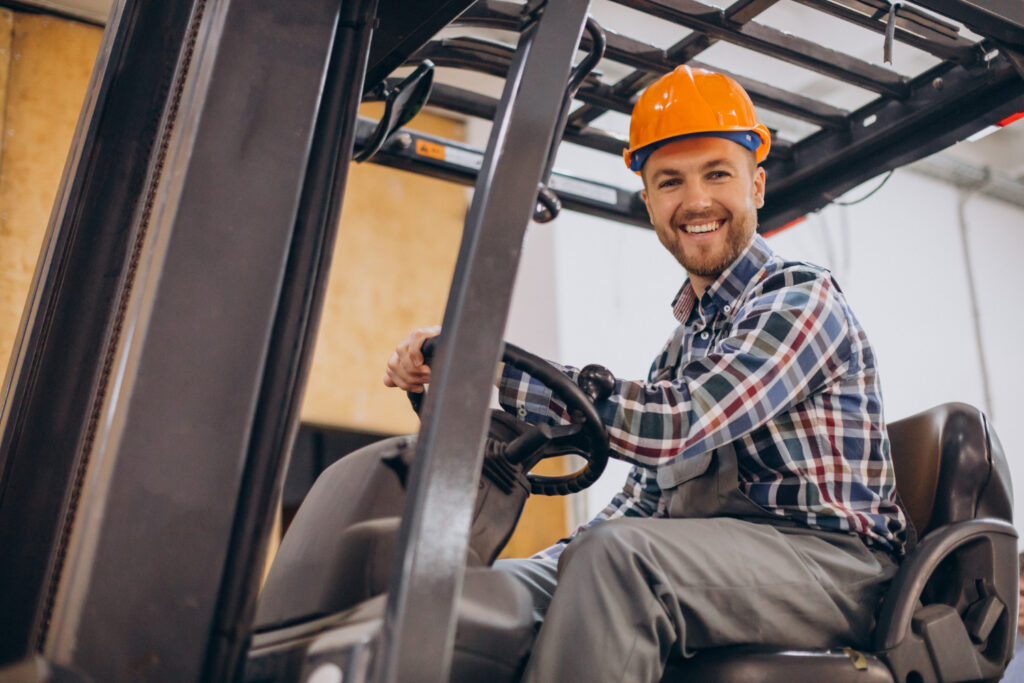Proper training is essential to maintain a safe work environment where forklifts are operated. Employees must be trained on how to correctly identify hazards that may cause harm to workers or property. Safety is essential, and workers must know how to operate forklifts properly.
Rules for safe forklift operation:
- Only operate a forklift on flat, level ground
- Never use a forklift near moving vehicles
- Always maintain constant awareness of your environment
- Always wear your seat belt to avoid injury in a collision
- Avoid sudden starts and stops
- Never open the lower on a laded forklift unless you intend to unload it
- When a forklift is abandoned, set the parking brake, and secure it
Each country has different laws governing the utilization of forklift trucks; therefore, you must read the operating manual before operating your machine for the first time.
Rules for safely loading a forklift:
- Before you start loading the forklift, check to make sure it is in the proper position
- Be sure that the base does not touch a wall or any other object
- Make sure that the load is not beyond the rated capacity
- Load only materials that are marked as acceptable to be loaded on your machine
- When loading, ensure that all equipment is seated properly
- Do not overfill your machine
Rules for safe pallet loading:
- Pallets should never be packed beyond their rated capability.
- Pallets should always be attached to their floor support structure with a pallet jack so they can support their weight when loaded by forklifts
The four groups of workers who are most at risk of falling from forklifts are:
- Drivers who drive straight mast forklifts designed for operations in warehouse or factory settings.
- Workers who operate straight mast forklifts with variable load beams can extend up to a height of 4 meters, which makes them more likely to fall over when reaching high places.
- Drivers who use LPG forklifts because they are less stable than those equipped with straight masts. However, they are easier to operate and require less training.
- Workers in surroundings where there is a greater chance of accidents caused by running into objects such as parked cars, poles, and walls.
The following are examples of dangerous situations that drivers should avoid:
- Avoid driving close to doors and walls so that they do not bump into them when moving forward or turning left or right, which can cause injuries caused by falling over or striking objects nearby.
- Avoid driving near corners where they can bump into other objects while moving forward or turning left or right.
- Avoid driving too close to the edges of slopes since the vehicle may tip over when turning and cause them to fall over.
- Avoid driving with load beams extending above their shoulders because they are more likely to bump into other objects.
- Avoid using forklifts with LPG in areas where people are riding bicycles or motorcycles because these vehicles can crash into them.
- Avoid traveling at a speed higher than 7 km/h with load beams below waist level because it makes it more difficult to stop at all times, which increases the likelihood of falling over.
- Do not lower the load beam below waist level, which can cause them to fall over when they try to stop or change direction.
- Do not lower the load beam above waist level, which can cause them to fall over when they try to stop or change direction.
- Avoid traveling too close to corners since they will hit other objects when turning left and right, which can lead to injuries caused by falling.
- Do not drive at a speed higher than 7 km/h when using a load beam that is below waist level. This increases the likelihood of falling over when stopping.
- Avoid driving near doorways, corners, or edges where there is a higher chance of bumping into other objects and a greater risk of causing injuries caused by falling.
- Avoid driving with LPG forklifts too close to bicycles or motorcycles because they can tip over, which can cause injuries caused by falling, as well as injuries caused by colliding with nearby objects.
There are several ways to reduce forklift fatalities and injuries. These include:
- Improved training programs enable operators to differentiate between different types of forklift trucks. Operators should also be trained to properly use load beams so that they can lower or raise them correctly in straight mast forklifts.
- Using infrared sensors gives warnings when an operator approaches nearby objects with high temperatures (such as hot water pipes or burners).
- Implementing safety measures at workplaces. Preventive measures can include providing protective barriers or building shorter fall distances from ground level to prevent accidents caused by falling.
- Improve the height of load beams, so they are not above an operator’s shoulders.
- Creating safe areas where they do not have to operate very close to objects can cause injuries such as slips, falls, and burns.
- Creating more training centers for workers to acquire skills and knowledge related to forklift safety. In addition, it is vital in preventing workplace accidents, which increases their awareness of preventable incidents and thus enables them to avoid injuries caused by these situations.
OSHA Requirements for a Forklift Safety Course
The Occupational Safety and Health Administration (OSHA) requires a forklift safety course for workers. Sending operators to forklift training is a great way to improve safety and increase efficiency. Training for both types of forklifts can be done online or through an in-person class.

